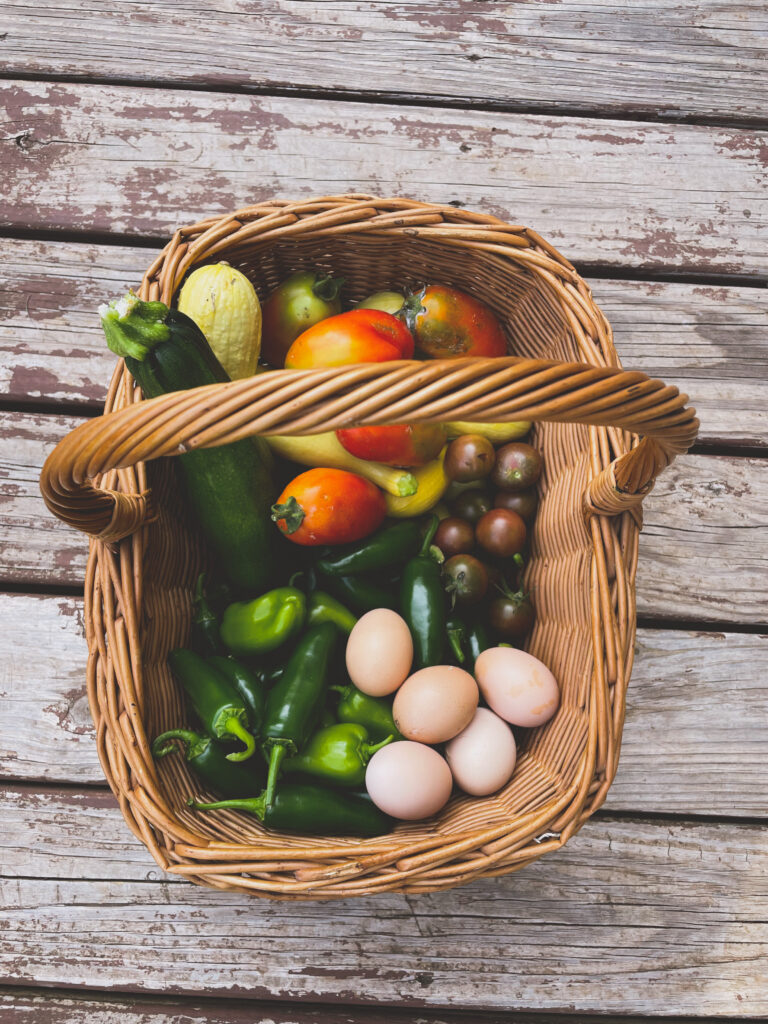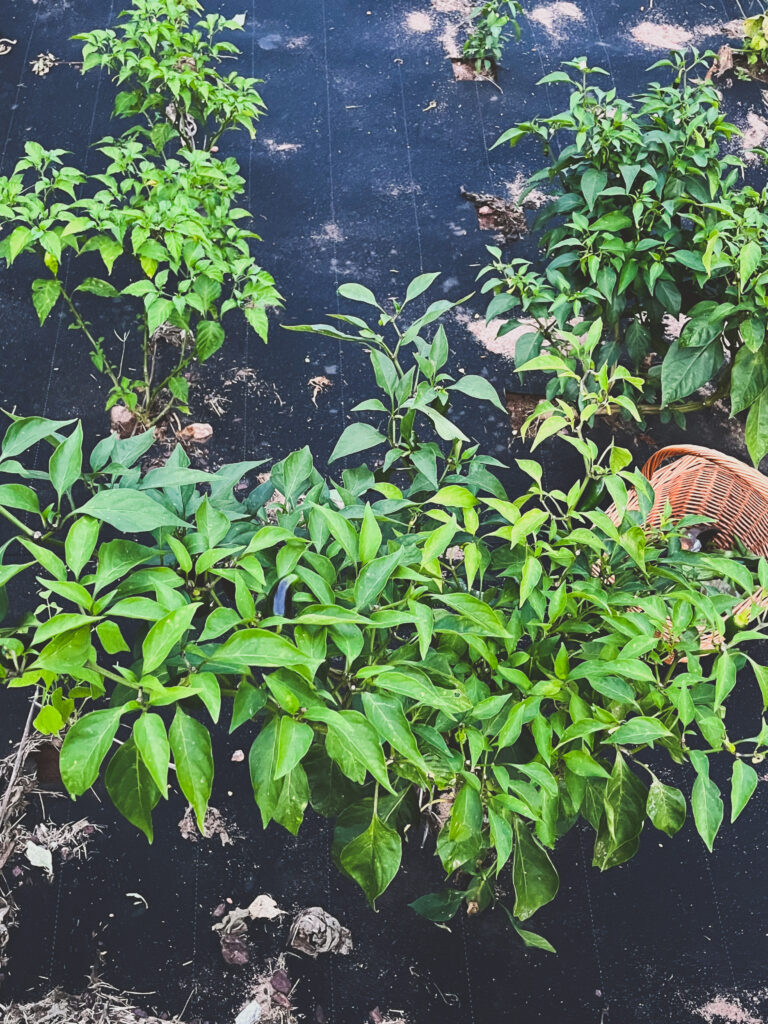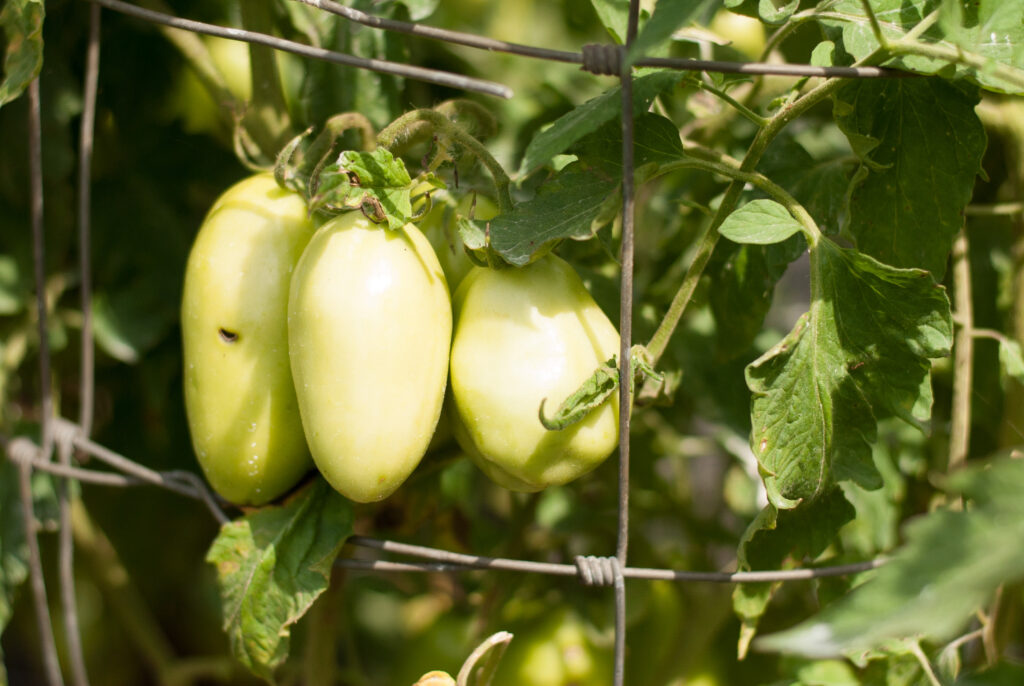Are you struggling with how to plan your garden? Planning a garden doesn’t have to be as complicated as it may seem. Here are 5 simple steps for how to simply plan your garden this year.

Planning a Garden
When you are dreaming of that perfect vegetable garden this summer, it’s easy to get lost in the beautiful gardens you see on social media. They are weed free, perfectly pruned, and beautifully laid out.
It can be very intimidating if you don’t know where to start. Not to mention the cost of the garden infrastructure. You can easily get lot in the decision making process.
I’ve been there too. With a full time job, and four busy kids, strategic garden planning is a must. Here are a few tips to get you started and producing food without all the complications.
1. Plan a Garden to Suit Your Family’s Needs
The first step in planning your garden is to decide what you want to grow. It’s easy to get caught up in the fun of gardening, and want to grow all the things. However, doing so will quickly overwhelm your time and space.
Start by taking a good look at what your family consumes. What produce are you buying the most of at the grocery store? Focus on those things first. For example: If your family eats potatoes several nights a week, but you only eat cabbage occasionally, focus your garden efforts on potatoes.
Remember to include the things you might add to recipes as well. Tomatoes are a good example of that. Not only can a tomato be eaten fresh, they can be preserved in the form of sauces, ketchup, relish, and in their raw form to use later on.
Here are some steps to help you focus your efforts on the foods you eat:
- Look at the recipes that are on regular rotation at your home. What ingredients are you using the most?
- Analyze your produce list at the grocery store. What items are you buying regularly?
- Make a list of the things you’ve found your family uses the most of.
- Some of the items that you only use occasionally might be more cost effect to buy. Be honest with yourself about how much of an item you actually eat.

2. Planning For Your Zone
After you’ve determined the food you consume the most of, you should determine if the plants will grow in your zone. A plant hardiness zone is determined by the average temperature of your geographical location.
Hardiness zones can be determined here. You may be eating a lot of a particular item, but it doesn’t necessarily grow well in your area. Some plants like tropical climates while others need very cold winters to grow. Knowing your hardiness zone is a very important step in planning what you will grow.
After you’ve determined your zone, review the plants on your list. You want to see if they grow well in your zone, and when you need to plant them. The almanac is a great resource for helping you determine when to plant your vegetables according to your growing zone.
You can even plant some species early enough in the season to re-plant and yield a second harvest. Also, pay attention to specific species of a plant that grow well in your zone. Some plants are developed specifically to be heat or cold tolerant.
An example would be the homestead tomato variety that is heat and wilt resistant. It was developed in Florida especially for the south. Follow this list on determining your planting zone.
- Visit the USDA Plant Hardiness website to determine your growing zone.
- Research plants from the list you created of your most eaten foods that would grow well in your zone.
- Determine which varieties of plats would grow best in your area.
- Determine what time of the year or dates to plant each variety of the plants you have chosen.
3. Choosing a location
Once you’ve determined what you are growing, and the plant varieties that would grow best in your area, you have to decide on a location for the plants. Many plants will need direct sunlight for at least six hours a day.
If you have a large enough yard that you can choose different areas to plant, observe the prospective areas during different times of the day. You are looking at whether or not they are shaded at any time.
Also look at how well the water drains from the area. Most plants like well-drained soil. You don’t want to put a garden in a spot that holds water.
You can change a lot about your soil using different amendments and additives. If you are wanting a no-till garden this is a great article about no-till gardening methods. I personally use a combination till and no-till by covering my garden in the off-season, and very lightly tilling in spring.
If you have a spot that is completely unworkable, raised beds are an option. However, they can be expensive to build, and the soil tends to dry out more easily than ground gardens.
If you don’t have enough outdoor space to be choosy, there are plants such as lettuces that enjoy a little shade. Look at your list of plants and varieties you’d like to grow, and determine what the light requirement is for each one. This will help you narrow your list down even more. Follow these steps in determining your garden spot:
- Identify areas that you could plant your potential garden.
- Observe the area for sunlight and water drainage.
- Choose plants on our list that will thrive in the specific areas you have observed.
- Amend your soil or prepare the ground.

4. Planting Your Garden
Planting the garden seems simple enough, however there are a lot of considerations you should take prior to putting plants in the ground. Some plants do well if they are started as seedlings inside, then transplanted outside after they have germinated.
Other plants don’t thrive as a transplant, and will need to be directly sown into the ground. Research the plants from your narrowed down list to determine how to plant them. This is a great article on plants that do well as a transplant, and plants that should be directly sown.
Most root vegetables such as carrots will not do well if they are transplanted, and crops like tomatoes do better if they are started indoors. Use the almanac as your guide on this as well. It is a great reference.
Once you have determined exactly how two plant your seeds, you can decide where you are going to plant them. Some plants will benefit from having another plant close by. This is called companion planting. For example, planting tomatoes with marigolds will help to repel the insects on the tomatoes. This article is a great reference for companion planting.
Soil Hydration
After planting, monitor you soil hydration frequently. If you get a small bit of soil and squeeze it together, it should stay together in a clump. This is how you know if your soil is adequately hydrated. Dry soil can inhibit the plant’s root system for expanding or cause it not to germinate.
- Research which plants from your list should be started indoors or directly sown.
- Determine companion plants when deciding on a location.
- Plant in the areas of the garden according to sunlight.
- Ensure the soil is adequately hydrated.
5. Planning a garden
I’ve included the link to my free garden planner in this post. After downloading, use this tool while you are planning your garden. It will help you narrow down which plants you really need. Once you have documented your garden, you can use the tool for future planting.



Click Here To Download My Free Garden Planner
More tips on planning a garden
Use weed control paper if you are short on time. There area purest who are against it, but If it helps you grow food, do what is necessary. Good mulch with tree bard or straw is also a great option to combat weeds. This method will also feed the soil vital nutrients.
Raised beds are beautiful, but not always necessary. They definitely have benefits in soil control, but a no-till method can also be used with similar results. Unless you are really short on space, don’t get paralyzed with planning and paying for a raise bed garden in the beginning.
Using pre-started plants from the big box stores is okay too. Again, you will have purest against this practice, but learning to garden is a challenge. Start with simply trying to grow food before getting into starting from seed if necessary.
If you already have a garden space, remember to put the garden to bed when the growing season is over, and wake it up in the spring.
[…] How to Plan a Garden […]